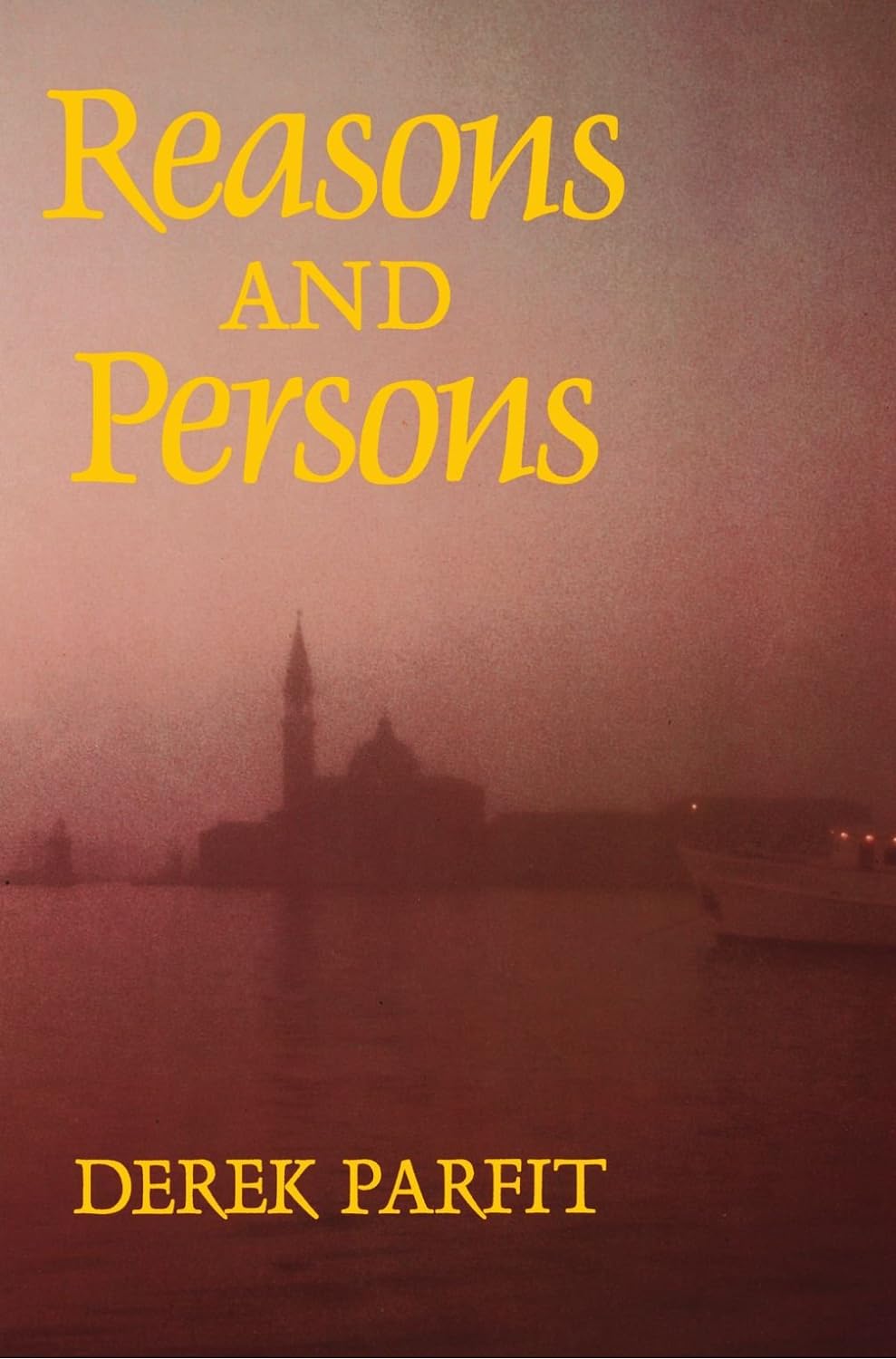Top Stories
Is There Anybody In There?—Derek Parfit’s Criticism of the Self
Parfit was concerned with the perplexing question of the self and personal identity. Do we have self? If so, what is it? Does the self possess any value?

Dedicated to the Memory of Connor O’Callaghan
The recent passing of a very good friend of mine, to whom this article is dedicated, has prompted me to reflect more deeply on certain philosophical questions about who were are and what really matters. Few contemporary philosophers have done more to challenge conventional answers to such questions than Derek Parfit, who tragically passed away on January 1, 2017. Though his work was not as widely known by the general public as other intellectual luminaries, his brilliant philosophical insights and imagination deserve a wider audience. This article on Parfit’s criticism of the self and personal identity is intended to make a small contribution to that goal.

Parfit’s work divided into two related set of concerns. Firstly, Parfit was concerned with the perplexing question of the self and personal identity. Do we have self? If so, what is it? Does the self possess any value? And so on. His philosophical examination of these issues were presented in seminal works such as his 1971 paper “Personal Identity” and his now classic 1984 book Reasons and Persons. Secondly, Parfit was concerned with ‘what mattered.’ He wanted to demonstrate that there was a non-subjective set of moral principles which human beings were capable of rationally understanding. Parfit believed he had demonstrated that his ‘triple theory’ was just such a non-subjective set of moral principles. Moreover, Parfit argued that from a meta-ethical standpoint we had compelling reasons to believe that holding to these moral principles ‘mattered’ in a deep sense, meaning that we should reject the nihilistic belief that nothing, including morality, was of value. This extremely ambitious claim was mainly presented in the three volumes of Parfit’s On What Matters, a book which prior to its publication was called “the most eagerly awaited book in philosophy” and, according to Peter Singer, is the “most important publication in moral philosophy since Henry Sidgwick’s The Methods of Ethics.”
In this article, I will be focusing mostly on Parfit’s arguments about the self and personal identity, and only briefly touching on how this relates to his arguments in On What Matters. This is in part because the later book is so vast, technical, and almost unwieldy—right down to the cameo commentaries by other moral philosophers and appendices that include essays on topics such as why anything exists—that it defies any easy summation. Those interested in a more thorough summary of Parfit’s later book should read Mark Schroeder’s excellent review of the first two volumes in Notre Dame’s Philosophical Reviews.
Derek Parfit’s Life
Derek Parfit was born in Chengdu, China in 1942. He was the son of Jessie and Norman Parfit, British doctors sent to teach preventative medicine in missionary hospitals. Parfit’s family quickly moved back to Oxford where he was to live for most of his life. During his childhood, Parfit considered becoming a monk, and was apparently disturbed that his non-believing parents did not share his theological commitments. Later he thought of becoming a poet, before studying history at Eton College and later at Columbia and Harvard. He later switched his focus to philosophy, publishing the 1971 paper “On Personal Identity” which made him instantly famous across the academic world. He assumed a position at Oxford University, where he would remain for the rest of his life, marrying his longtime partner Janet in 2010.

Parfit was well known to be an eccentric personality. He had Asperger’s syndrome, which seems to have contributed both to his ability to focus on a given set of problems with laser-like intensity and his lack of concern for many material things. Parfit disliked wasting time, and so always wore the same clothes and ate the same food to avoid having to choose what to wear and to eat. He was known to struggle with talking about anything other than philosophy, which was his intense passion. Nonetheless, in the many obituaries that appeared after his death, many of Parfit’s colleagues and friends commented on how he would bend over backwards to offer thoughtful and constructive commentary on their work. Parfit was also a supporter of the effective altruism movement, and donated 10 percent or more of his income to global charities aimed at effectively ameliorating the suffering of the world’s poorest. He was known to be intensely sensitive to human suffering, and indeed, both of his books demonstrate a passionate desire to make the world a better place using ideas.
The Self in Western Philosophy
What unites Parfit’s concerns about the self and his concerns about morality and meta-ethics is his belief that Western philosophy and culture have been far too beholden to the idea that it is the self which ‘matters.’ This belief unites thinkers otherwise as far apart as Plato, St. Augustine, libertarians, Rawlsians, and so on, demonstrating its tremendous impact on our culture. Most of us feel we are morally responsible to ourselves and, at best, only to those others who we personally choose to assume obligations towards for affective reasons. To Parfit, this concern with the self was wrong for two reasons. Firstly, it was wrong as a moral standpoint. To his mind, reason indicated that we should adopt a far more altruistic position from which we seek to “make things go best” for both humanity as it exists now and for future generations (Parfit was one of the founders of population ethics). But, more importantly for the purposes of my article, the idea that the self is what matters was wrong because we have good philosophical reasons to stop believing that there is such a ‘self’ in any strong sense.
The philosophical argument that there is such a strong ‘self’ goes back at least to Plato, who famously maintained in The Republic and The Symposium that the soul was the real essence of each individual since it was what was eternally everlasting. This, of course, has had an immense impact on Christian thought down to the present day. But it has gone well beyond religious thinking in its cultural impact. Throughout the discourse of Western intellectual history even those unconvinced by Plato’s claim about the immortal soul have tried to give some positive answer to what the ‘self’ is since of course it exists and must be something. Secular rationalists in the lineage of Descartes, including modern thinkers like David Chalmers and Noam Chomsky, believe the self is located somewhere in the conscious mind—the proverbial ‘ghost in the machine.’ Materialists like Daniel C. Dennett believe that the brain is the location of the self, arguing in Consciousness Explained that the self is “the center of narrative gravity” for the brain’s biological processes. Philosophers influenced by Kant and Nietzsche argue that the self is in some sense the product of the will, or our existential choices as Sartre might have put it. Classical liberals argue that self-interest is the locus of political legitimacy. Each tradition and thinker has different reasons for arguing that the self is this-or-that. But all agree that it must exist somewhere.
Of course, there have always been outliers within the Western tradition. David Hume, in his Treatise on Human Nature, argued that, from a purely empirical standpoint, there doesn’t seem to be such a self in any strong sense. There is only the flow of experienced perceptions and the emotional reactions to them. Nowhere in this flow is there some solid thing called the ‘self’ which binds them all together:
For my part, when I enter most intimately into what I call myself, I always stumble on some particular perception or other, of heat or cold, light or shade, love or hatred, pain or pleasure. I never can catch myself at any time without a perception, and never can observe anything but the perception.
The German philosopher Martin Heidegger made a different-but-related argument in Being and Time, when he rejected the idea of a fixed human essence, arguing that we are beings who care about the world and are always stretched ahead into the future and behind into the past. We exist in the present only in one sense, since we draw from our memories of the past to establish goals for the future which orient what we are doing at any given moment in time. This process of stretching backwards and forwards in time problematizes the idea that a core self ever exists in any one moment.
These philosophical critics were largely outliers however, and even they struggled to fully abandon the idea that there is a self somewhere in all these processes. Hume remained morally committed to the idea that most of us should seek out happiness and pleasure quite selfishly, despite recognizing that there may be no real self to enjoy such pleasures. Heidegger became (in)famous as a philosopher of authenticity, both for the individual and—more maliciously—for the German collective in Nazi Germany. By contrast, Parfit would argue that we need a more radical break with the idea of self-hood, and points to Buddhist ideas as a good parallel for what he is trying to achieve. On Parfit’s reading, the Buddha instructs us to gradually let go of our attachment to the idea of the self and the moral principles related to it. Parfit believed we have good philosophical reasons to take this argument very seriously.
Derek Parfit on the Self
Parfit argued that throughout Western philosophy there have been four major and variably convincing answers given to the question “What is the self?” First is the claim that the self is simply the body. Second is the claim that the self is the immortal soul that exists both outside and within the body and mind. Third is the claim that the self is the brain. And fourth is the argument that the self is our memories:
The argument that the self is the body was criticized by Parfit in his response to a paper by Judith Thomson. Thomson had argued that if we were to transplant someone else’s brain into another’s body, the person who would wake up from this operation would be the individual who originally inhabited the body, but would mistakenly believe he was the person whose brain was transplanted. Parfit rejected this argument, claiming that Thomson’s reasoning was too reductionist. He agreed that a person can only be the same self if they have one and the same body (we will see why later). But he did not think it therefore followed that the body is all that the self is. Consider a thought experiment in which my brain is removed and destroyed, but a computer program is installed in my empty skull which regulates my various biological functions and ensures they continue to chug along while the body lies on the hospital bed. My body would continue to exist and live in some respect, but most of us would not say that ‘I’ was there any longer.
The argument about the soul is another claim criticized by Parfit. This is the argument that the ‘self’ is in some sense a non-physical entity that exists within a body and a mind, but isn’t reducible to either. Parfit rejected this argument, claiming that it cedes too much to a non-materialist worldview; a worldview which in On What Matters Parfit implied he is keen to abandon in order to put morals on an objective foundation not dependent on God or other spectral entities for support.
The third argument that Parfit criticized was the idea that it is our brain that is the source of our self. His argument to this effect builds on a thought experiment discussed by Sydney Shoemaker and David Wiggins. Imagine a situation in which technology had sufficiently advanced so that my brain could be divided, placed into two respective bodies cloned from my own, and both sides of my brain would live in the body and continue to function at the same capacity as my original unified brain. When these two clones woke up, who would they be and where would ‘I’ be? There seem to be three possibilities:
- I have died, and the two people that wake up are not me.
- I survive as one of the two people.
- I survive as both people.
Parfit argued that number 2 and number 3 might seem attractive to those who maintain that what ‘I’ am is simply my brain and its functions. Since the two halves of my brain still function equally well in the two bodies that are identical to my own, in some sense it seems that ‘I’ survive either as one or both of these people. But Parfit did not find this convincing, since once both individuals get up and go their separate ways, they begin to have new experiences and develop new memories the original ‘me’ did not have and which they do not share with their twin. In this sense, despite having the same brain as me and each other, neither of the two people seem to really be ‘me.’ They are closer to being descendants of the original person who carry on with a shared pool of memories but who are—or at least who become—separate people.
This brings me to the fourth argument that Parfit criticized; that it is our memories that are the source of the self. This seems to be the strongest argument so far, especially given Parfit’s argument that different memories and experiences beget different people over time. But Parfit asked us to consider another thought experiment inspired by Star Trek. Imagine that there is a machine which could scan my body and brain on Earth, dissolve the original, and create an exact duplicate with all my memories and experiences intact on Mars. This would seem to be a way to tele-transport myself across great distances. But imagine there was an accident when I was being scanned by the machine, and the original person steps out of the malfunctioning machine on Earth. I then stare at a computer screen linked to Mars where I see my duplicate walk out and stare at me. The operator of the machine on Earth then tells me that there has been an accident and my original body is going to dissolve in a few moments, but that I should not worry since I have successfully been transported to Mars because my duplicate will carry on living with my body, brains, memories, and concerns. Should the original person simply smile and think that he carries on living despite this given body and brain facing disintegration in a few moments? Parfit thinks not. Despite having my body, brain, and memories, the duplicate is in some sense not me because I have died as a result of the accident.
Conclusion
Of course, Parfit was not a full skeptic about the self. He argued that there are people in the world, and that they do have some kind of identity. But it is not nearly as strong and solid a thing as we have long thought. Instead, it is closer to what he calls a “republic” of entities; bodies, brain, and memories intersecting and interacting with the world in various ways. This has moral consequences according to Parfit. Since there is no self in any strong sense, we are wrong to give our private needs so much weight at the expense of others. Some might take this to be an impermissible opinion. But Parfit considered it quite liberating. As he put it in Reasons and Persons:
My life seemed like a glass tunnel, through which I was moving faster every year, and at the end of which there was darkness… When I changed my view, the walls of my glass tunnel disappeared. I now live in the open air. There is still a difference between my life and the lives of other people. But the difference is less. Other people are closer. I am less concerned about the rest of my own life, and more concerned about the lives of others.






